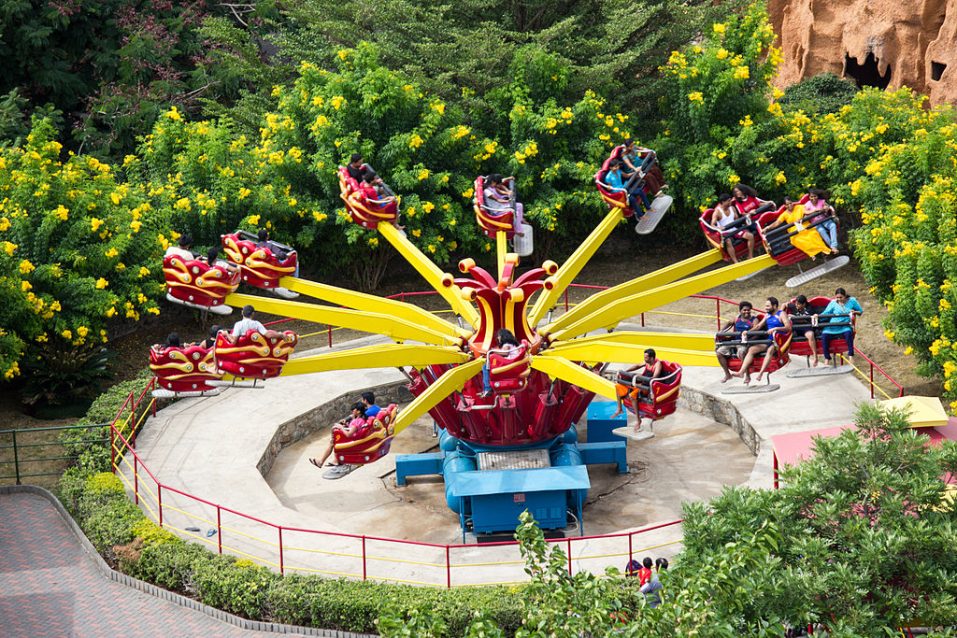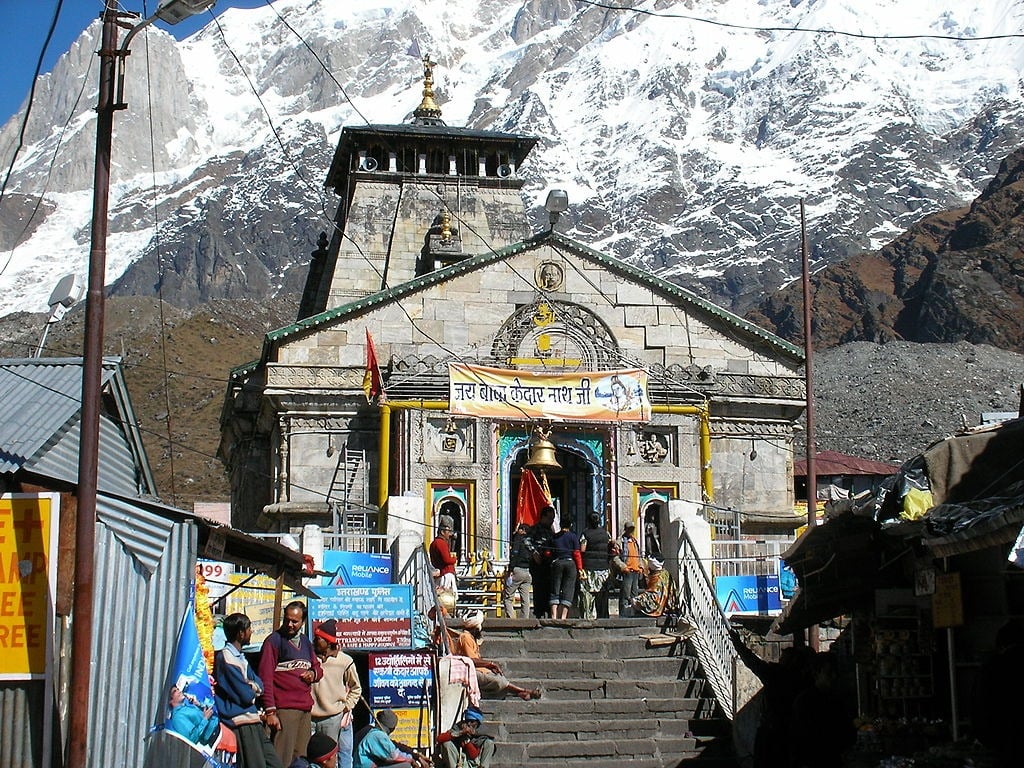My life is my message – M.K. Gandhi
Once a humble dwelling of Mahatma Gandhi and his wife Kasturba, Sabarmati Ashram is now a monument of national importance sitting in the heart of Ahmedabad. About 5 km north of Ahmedabad, Sabarmati Ashram lies on the serene, tranquil stretch of Sabarmati River. Also known as the Satyagraha Ashram or the Gandhi Ashram, indeed the monument has witnessed many historical events for Indian independence that ultimately set the country free in 1947 including the legendary Dandi March.
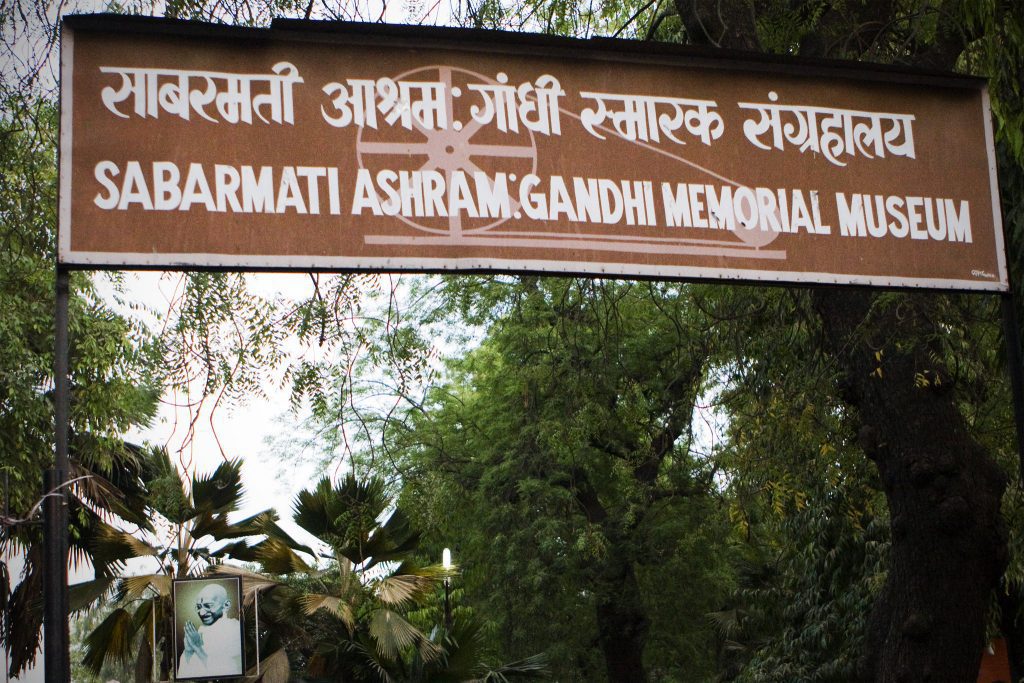
The Sabarmati Ashram is not just a place where you can go back in time to trace the life of Mahatma, it is a destination for soul-searching as well. Gandhi would describe this place as, “This is the right place for our activities to carry on the search for truth and develop fearlessness, for on one side are the iron bolts of the foreigners, and on the other the thunderbolts of Mother Nature.”
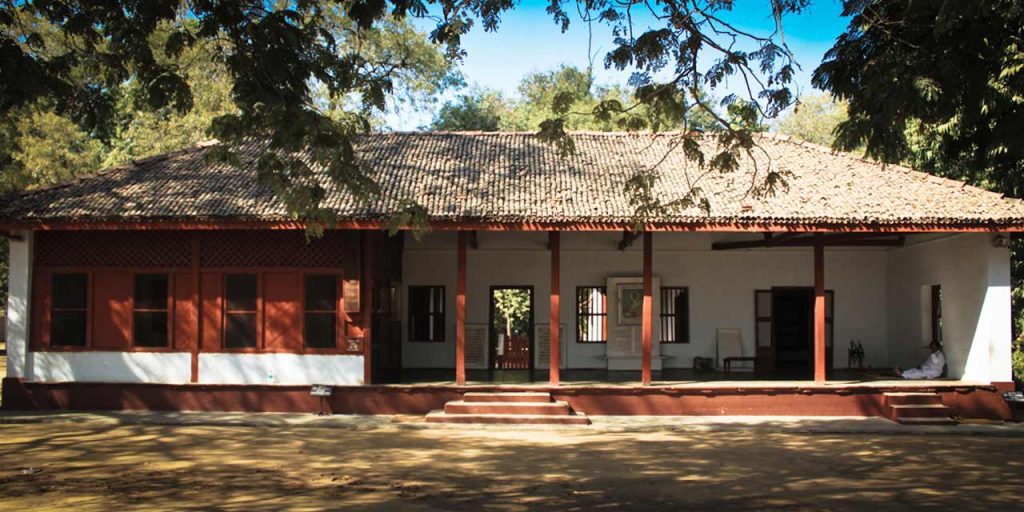
Note: This article belongs to a series called Freedom to Travel. The series aims at educating the reader on the lesser-known locations that were instrumental during the Indian Freedom struggle. You can find the other articles in the series here.
What makes the Ashram so special
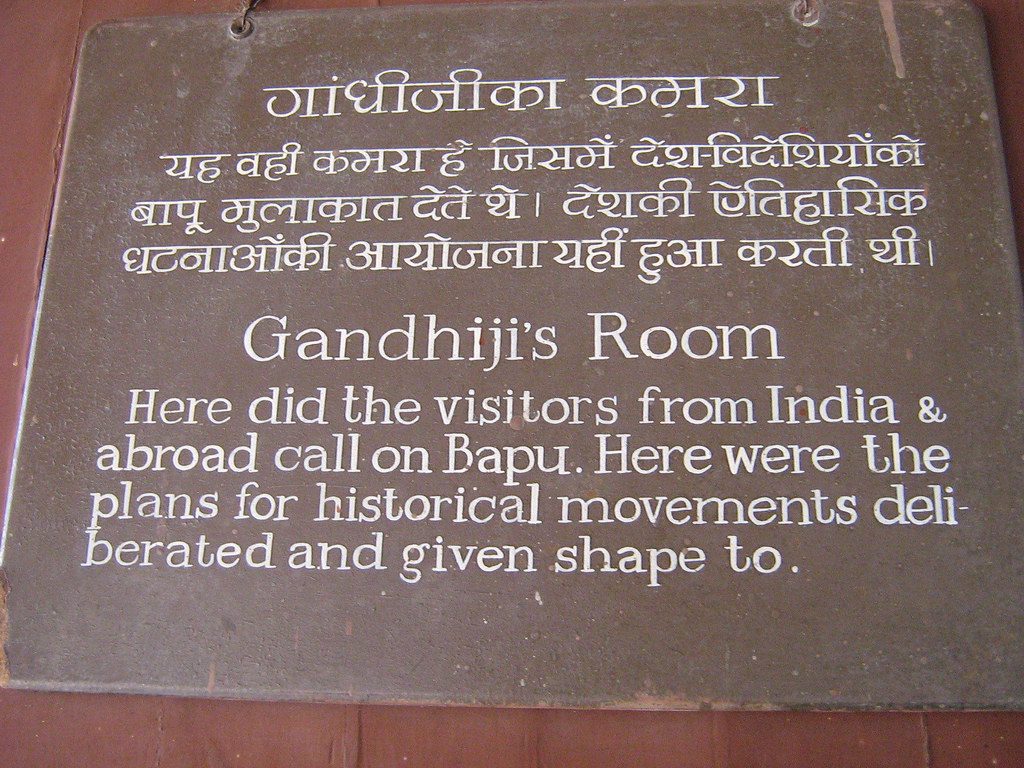
Sabarmati Ashram still echoes with the legacy left behind by Gandhi. Here lived a man with ideas so strong that you will be moved even today; here lived a man who united an entire nation; here lived a man with a simple yet an unmistakable understanding of the common man. As soon as you enter the ashram, you can immediately feel a change in the air. There is peace and serenity all around you; the timeless wisdom and warmth of the great Mahatma continue to inhabit the ashram spread over 32 acres of land. There is so much more to the walls and pictures, this is a place that shaped not just the greatest leader the world has ever known, but also the future of India.
A tour of the Ashram
Museum and Library
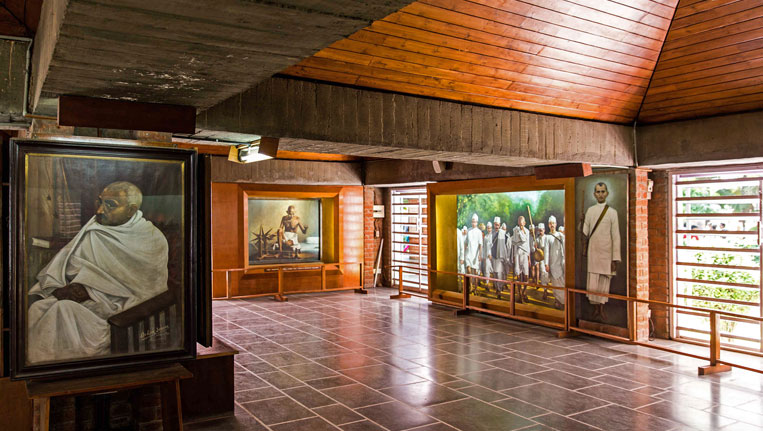
The museum and library are newer additions to the national monument. Architect Charles Correa designed these two buildings to ensure they match the existing structure of the ashram. As you step on to the porch, a sign reads “Begin your tour from here”. On the right-hand side of the porch, there is a photo gallery called “Gandhi in Ahmedabad” which has pictures on the life of Mahatma Gandhi in Ahmedabad. It includes the famous Dandi March which was initiated in this very same ashram. Spend some time here to know all about Gandhiji’s extraordinary life in Ahmedabad.
[Also read – Navratri expereince in the city of Vadodara ]
‘My Life is My Message’ Gallery
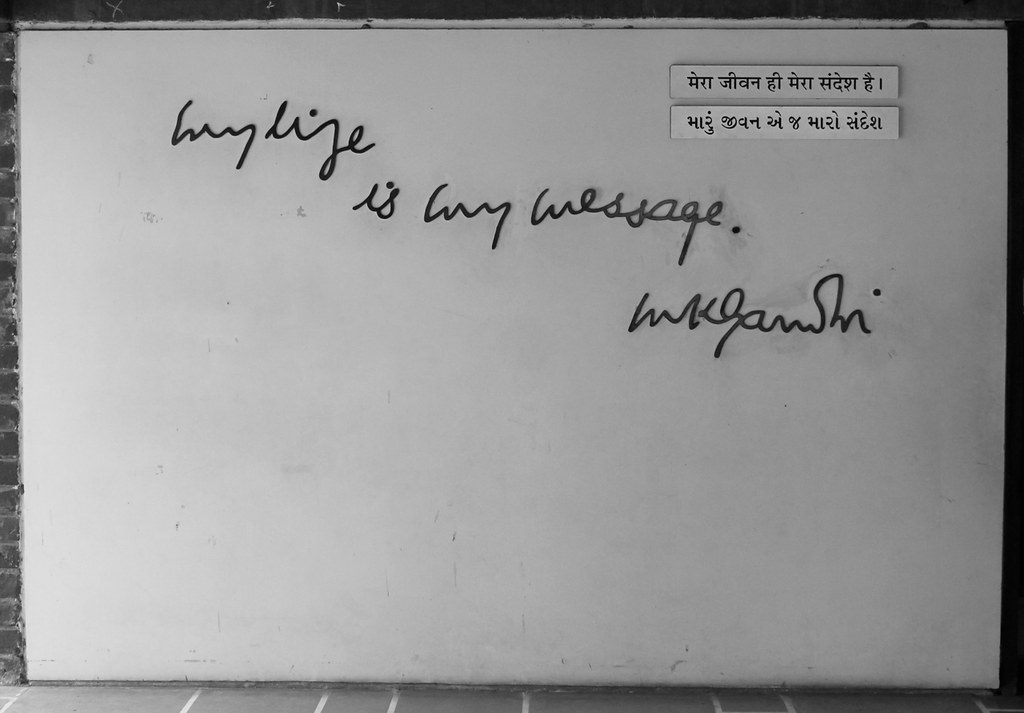
On the left side of the porch, there is a whiteboard that says “My life is my message” written by none other than the Mahatma himself. Just beside the whiteboard, there is another photo gallery displaying pictures of Gandhi from his birth to the tragic assassination. This photo gallery takes you through an extraordinary journey of a young man in South Africa to the Father of the Nation.
Library
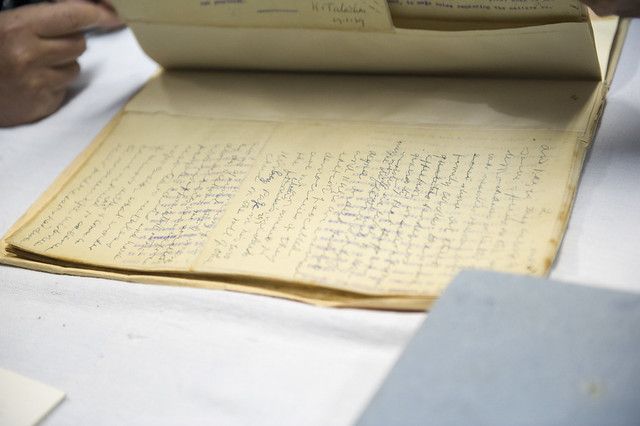
The library has an extensive collection of letters, manuscripts of articles written by Gandhi which were later published in Navajivan, Young India and Harijan; a collection of postal stamps; diaries of Gandhi and some of his colleagues; eulogiums offered to Gandhiji; films in Hindi, Gujarati, and English portraying Gandhi’s life and mission; video as well as audio cassettes; rare books on India’s independence struggle along with rare photo negatives. On exiting the gate of the Library, you can see pictures of eminent personalities such as Bernard Shaw and Albert Einstein with quotations on Gandhi.
The library fills you with joy and pride for the nation and at the same time humbles you by reminding all that our forefathers endured to give us a better tomorrow.
Magan Niwas
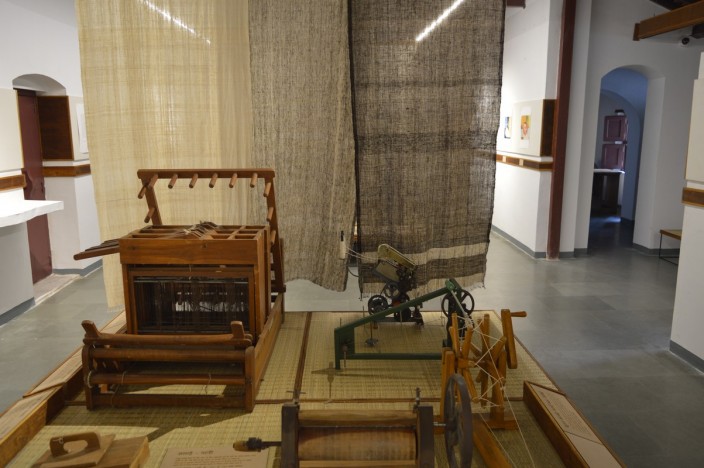
If you exit the porch from the back, you will encounter the residence of Maganlal Gandhi, nephew of Gandhi, and one of the most important persons in the Ashram. He was affectionately called ‘the Soul of the Ashram’ by Gandhiji and one would learn why when they read about his contribution. There are charkhas of various shapes and sizes in this modest house which has now been turned into a museum hall. It was, in fact, Maganlal who introduced different upgraded designs of the spinning wheel which helped spin some of the finest yarn in 1924.
Hriday Kunj
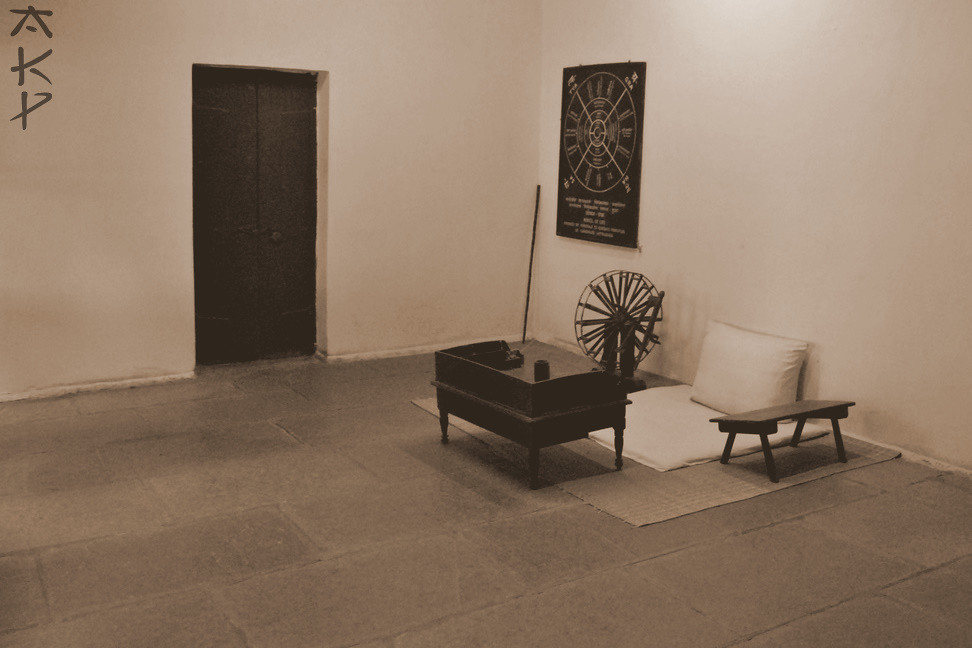
Named by Kakasaheb Kalelkar, Hriday Kunj is where Mahatma Gandhi lived with his wife Kasturba Gandhi from 1918 to 1930. Hriday Kunj is the simplest of all complexes with six small-sized rooms and a traditional courtyard in the center. To the left of the courtyard is a small room that was once occupied by Gandhi. Only a writing desk and a charkha can be found inside. The room is closed for the general public to enter but there is a small opening made in the door for visitors to take pictures and enjoy an unobstructed view of the room. The room of Kasturba Gandhi is empty with only a picture hung on the wall. The kitchen is also empty with only a few utensils out on display. The humble dwelling of Gandhi and his wife only exudes humbleness and it only makes it more clear why this frail man was loved and trusted by an entire nation.
[Also read – Kite festival in India]
Vinoba-Mira Kutir
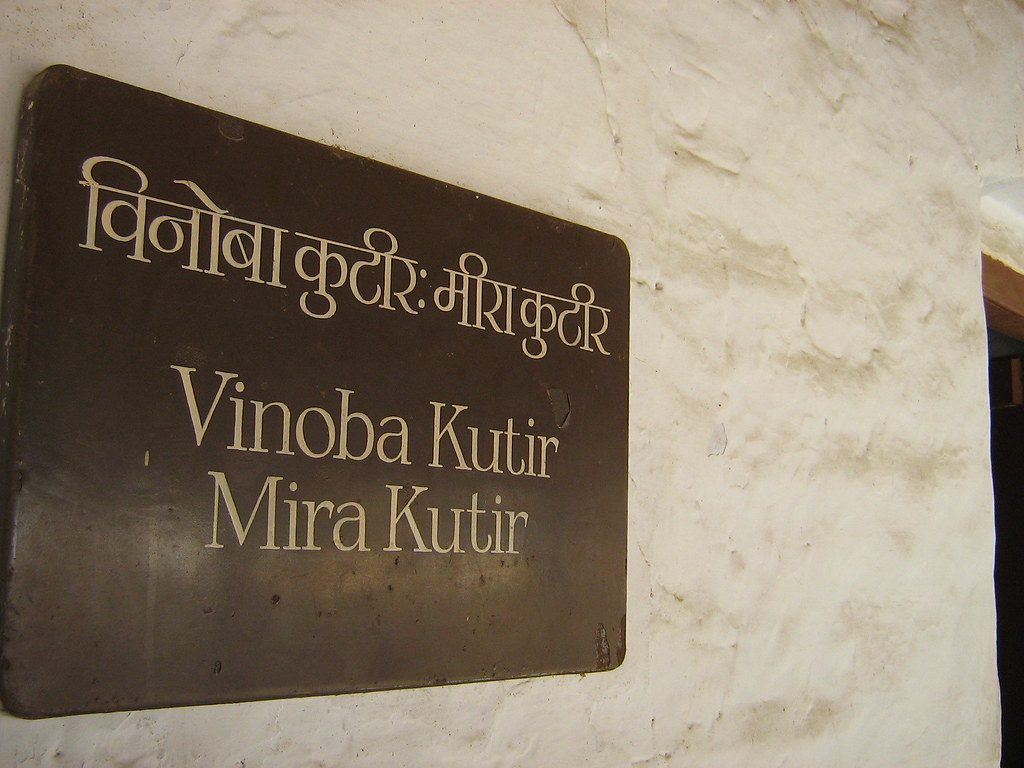
Right opposite to Hriday Kunj is the Vinoba-Mire Kutir. The complex has been named after the people who have resided in this building. Between 1918 and 1921 Vinoba Bhave resided in this house whom Gandhiji proudly called the model of Satyagraha Movement. After Vinoba Bhave, Miraben lived here from 1925 to 1933. She was the daughter of a British rear-admiral, who moved to India and became involved in the country’s freedom struggle. Mirabehn was the name Gandhiji gave her and she joined him in the Ashram activities and lived a simple life here. The small cottage has two rooms, one washroom, and a kitchen reflecting the minimalist lifestyle of these notable personalities.
Nandini
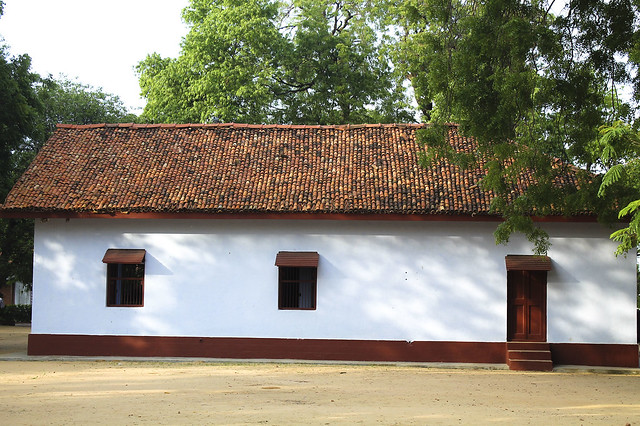
On the right-hand side of Vinoba-Mira Kutir is a large house known as Nandini. Nandini was used as a guest house for notable personalities who came to the ashram to meet Gandhi. Famous personalities like Rabindranath Tagore, Pandit Jawaharlal Nehru, Dr. Rajendra Prasad, Reginald Reynolds, ‘Deenbandhu’ C.F. Andrews, Henry Polak as well as Maulana Abul Kalam Azad are known to have spent their time in the ashram right here. Nandini is not open for public tours.
Other important buildings in the Ashram
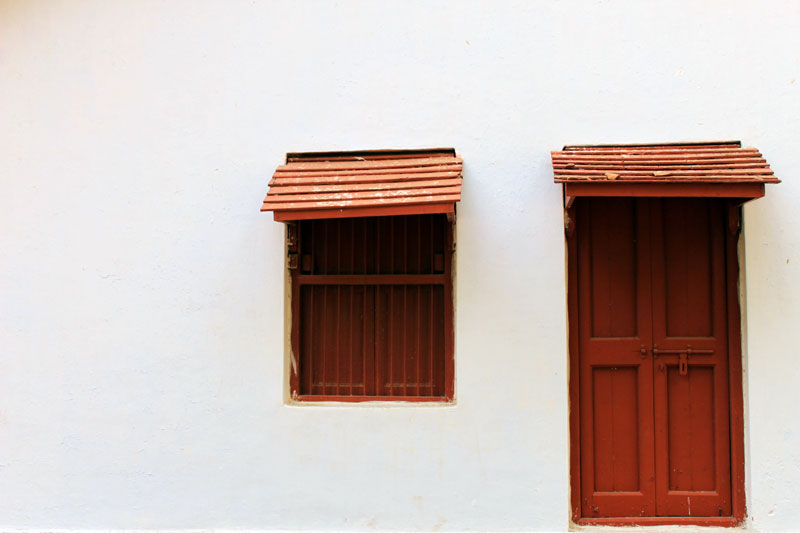
In addition to the above-mentioned buildings, the Sabarmati Ashram architecture also houses Udyog Mandir which was established by Gandhiji in 1918. This mandir stands for the self-reliance and dignity of the labour who were part of the mill strike in Ahmedabad. It was here that the message of ‘Freedom through Khadi’ was given out first. Unfortunately, the temple is not open for public tours. Another significant building in the ashram is the Upasana Mandir. Every morning and evening Gandhiji gave discourses on Bhagavad Gita here. The rich history of the Sabarmati Ashram makes you want to imagine how this frail man would sit and talk to a large gathering every single day.
How to get to the Ashram
The state of Gujarat is well-connected to nearby as well as faraway states in India. Hence, it is quite convenient to reach Ahmedabad. The city can be reached via flight, train and even a rented taxi.
The Ahmedabad Airport, officially known as Sardar Vallabhbhai Patel International Airport is the nearest airport to Sabarmati Ashram. Only 7 km from the city, one can rent a full-day car in Ahmedabad for a safer, faster commute.
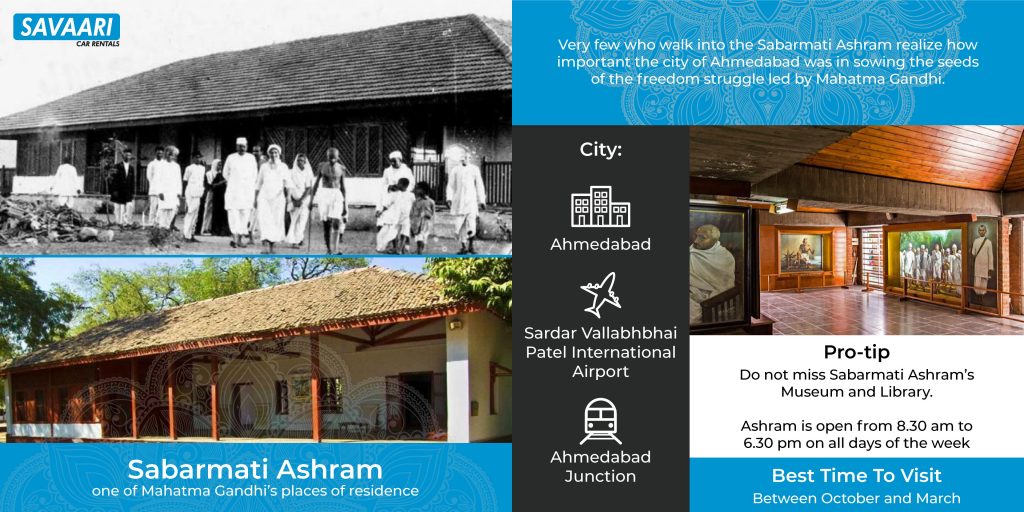
The Ahmedabad Railway Station also known as the Kalupur Railway Station is efficiently connected with every major city in India. A convenient taxi service from from the Ahmedabad railway station can be easily hired at any time of the day to reach Sabarmati Ashram.
Today the importance of Sabarmati Ashram lies in the fact that this humble dwelling stands to guide and inspire countless others in their own battle against injustices. Sabarmati Ashram is an exceptional testimony of Gandhi’s love for the nation, his contribution to the freedom struggle and the non-violent ideology he followed his entire life. Each and every element in the Ashram moves you, inspires you to lead a life that is not bigger but meaningful and purposeful. You come out of this ashram feeling content. Gandhi continues to reside here, his legacy continues to fill every heart with only love and pride for a nation that he so valiantly fought for.
The Sabarmati Ashram timings are the same for all days of the week. The ashram is open from 8.30 am to 6.30 pm every day. An extremely important monument for Gujarat tourism as well as Ahmedabad tourism, the Ashram does not have an entry fee. It is open to everyone who wants to know about India’s independence and Gandhi’s major role in it.
Savaari has drafted a comprehensive report on the Travel and Mobility trends in India in the context of the COVID pandemic. The information presented in the report will help you make an informed judgement on how Car Rentals have emerged as the safest and affordable mode of transport during these unprecedented times.
Last Updated on January 17, 2024 by blogadmin


